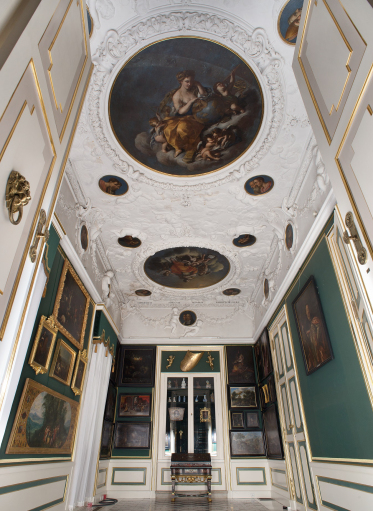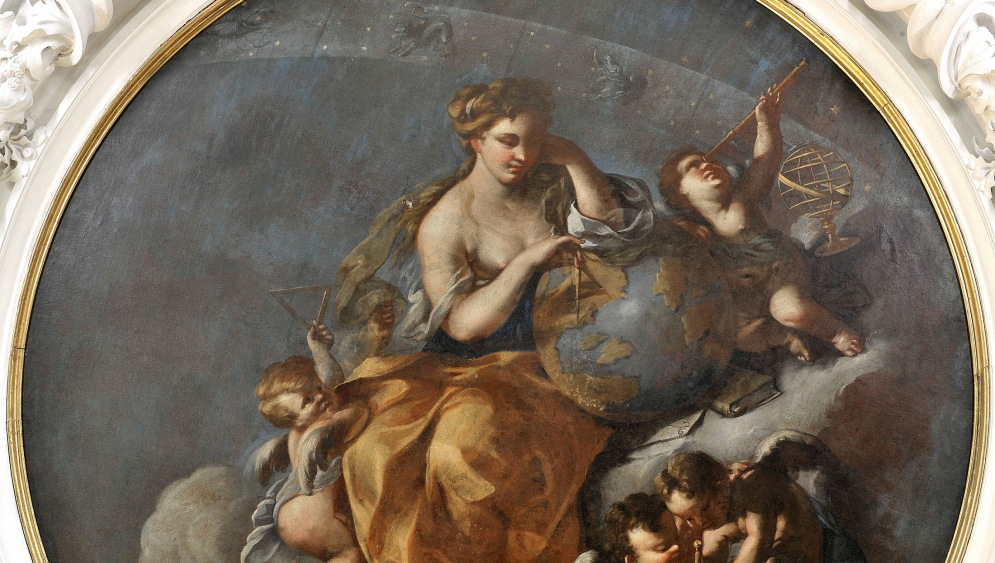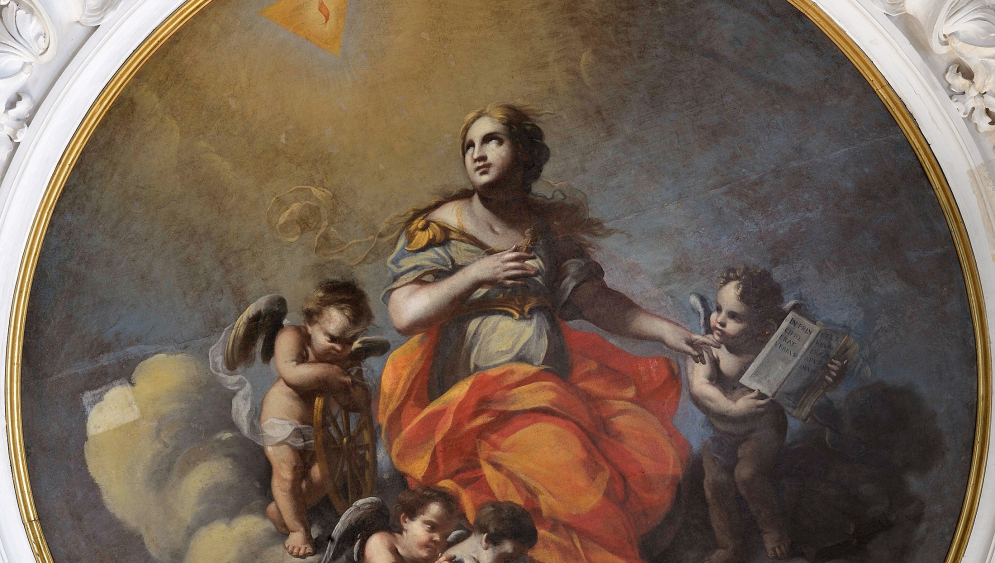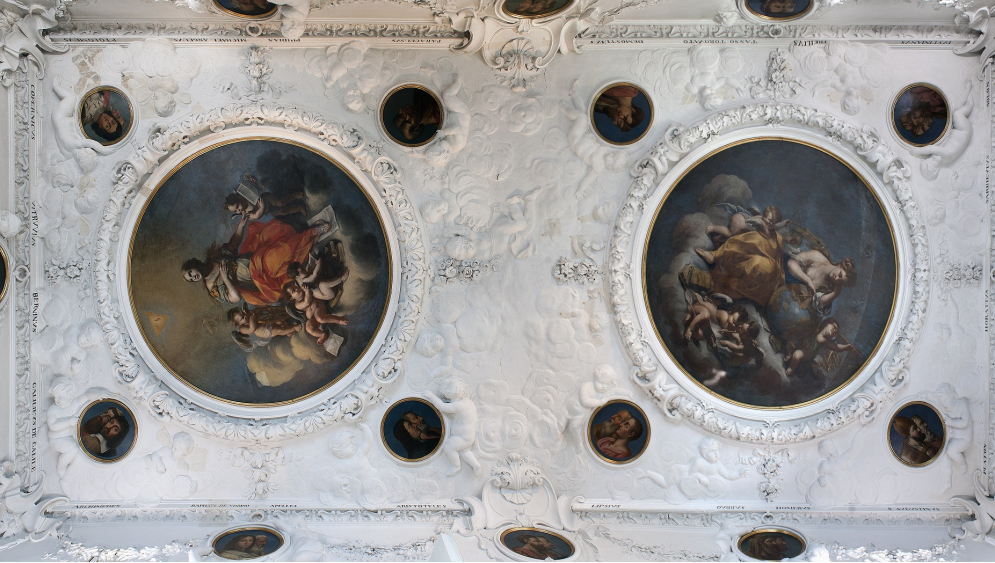Who designed and decorated the King’s Library?
The decorations of the King’s Library date back to the 1680s. The complex symbolic concept for Library design is the work of Adam Adamandy Kochański, a Jesuit scholar, royal librarian and mathematician. Initially, the task of creating paintings for the Wilanów library was entrusted to Claude Callot, a Frenchman who had been working in Poland for many years. Callot painted the two large tondos depicting Theology and Philosophy. At least some of the smaller plafonds were produced by other artists (maybe members of Callot’s workshop group), after Callot had left Wilanów.
Natural Knowledge and Revealed Knowledge
Two large tondos decorate the ceiling of the King’s Library. They depict the personifications of philosophy and theology, which were then believed to be the most important fields of study. Deep in thought, Philosophy sits with an elbow propped up on the globe of the Earth and holds a pair of compasses in the other hand. For reasons explained in the next boards, this tondo has been taken down from the ceiling – giving you the opportunity to take a much closer look at the painting. Philosophy is surrounded by putti bearing astronomical and mathematical devices. Observing the earthly round and performing measurements were associated with discovering the secret of the world’s harmony, proportions and perfection. The background is a blue celestial body, with a fragment of the Zodiac belt.
Theology’s hand rests on her chest, while she gazes upwards, at the triangle of Divine Providence. With her other hand, Theology points at a book held up by one of the putti. The page visible to us is the beginning of the Gospel of John. At Theology's feet lies a sheet with the first words of the Book of Genesis. These two texts from the Old and the New Testament refer to God as the beginning of all things. At Theology’s feet, two putti sit on a pile of books – these are the Major Prophets’ (Isaiah’s, Ezekiel’s, Daniel’s) records of Divine Revelation. The wheel held by one of the putti is an important attribute of Theology – it symbolizes God, laws, infinity, the absolute, eternity...
Portraits of scholars and artists
Sixteen medallion portraits of scholars and artists, symmetrically distributed on the ceiling and coving, surround the two tondos. Some portraits have been taken down and can be admired from a short distance. In keeping with Kochański’s scheme, each medallion shows two portraits of prominent scientists or artists of pagan Antiquity and the Christian era. Names of the depicted persons can be found under most medallions. And so, philosophy is represented by Plato and Saint Augustine, Aristotle and Justus Lipsius, astronomy by Ptolemy and Nicolaus Copernicus, architecture by Vitruvius and Gian Lorenzo Bernini, sculpture by Phidias and Michelangelo, and painting by Apelles and Rafael. It is highly likely that such pairing of outstanding scholars and artists reflected the library catalogue structure and served as a guide to finding the subject of interest.
How the function and décor of king Jan III's changed over time
The King’s Library under Jan III
Today’s one-space King's Library was originally a two-part room. An arcade might have passed through the middle, as reflected by the arrangement of moulding and painting decorations on the ceiling. The three-dimensional illusion marble flooring is another element of the initial interior which has survived to date. At the library, King Jan III gathered a collection of several thousand volumes. As the monarch’s life neared its end, the books – and probably the furniture as well – were moved to Żółkiew residence. The room’s function changed – from then on, it served as a cabinet with direct access to the most important apartments – the King’s Antechamber and, further on, the King’s Bedroom.


















